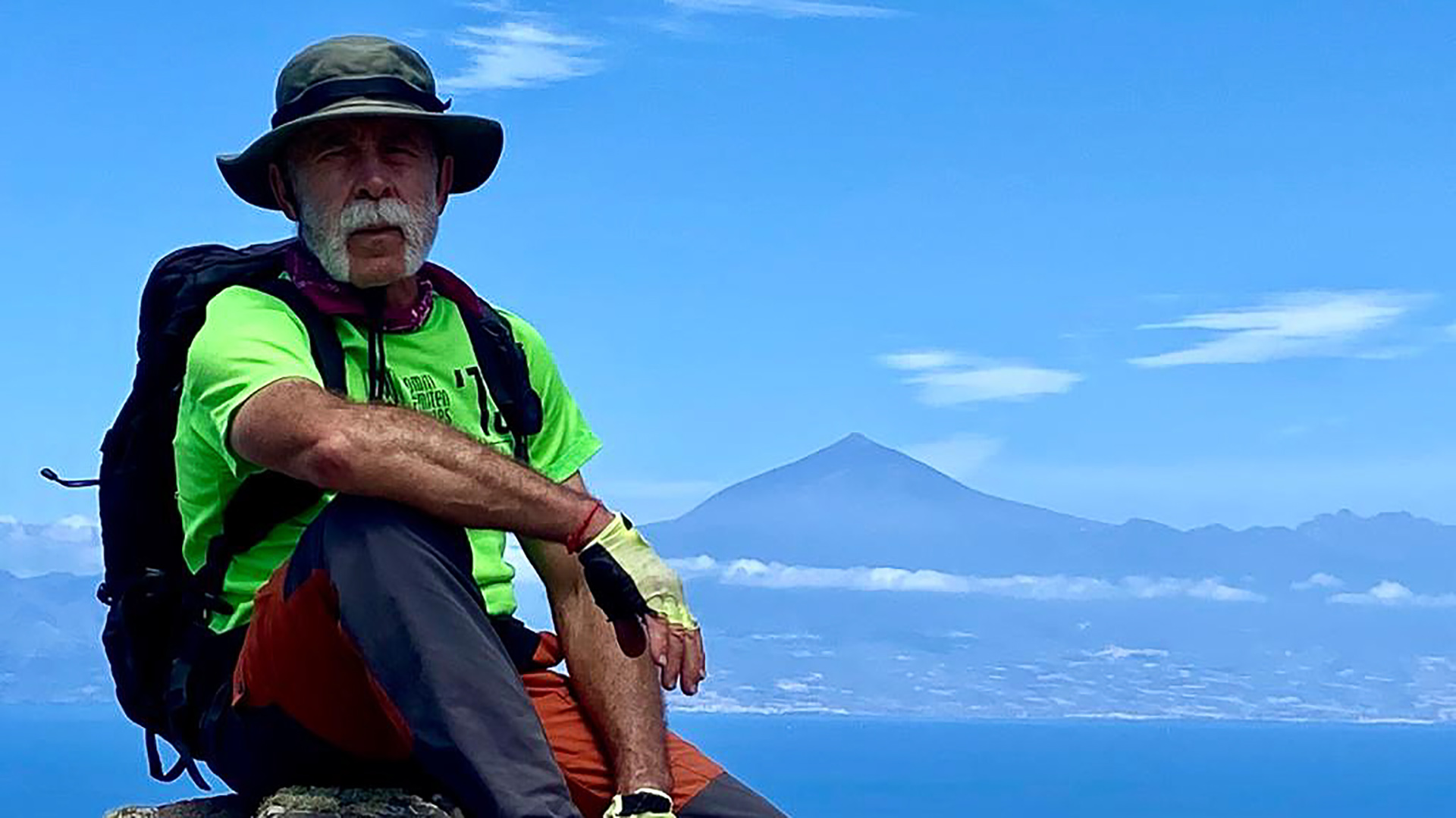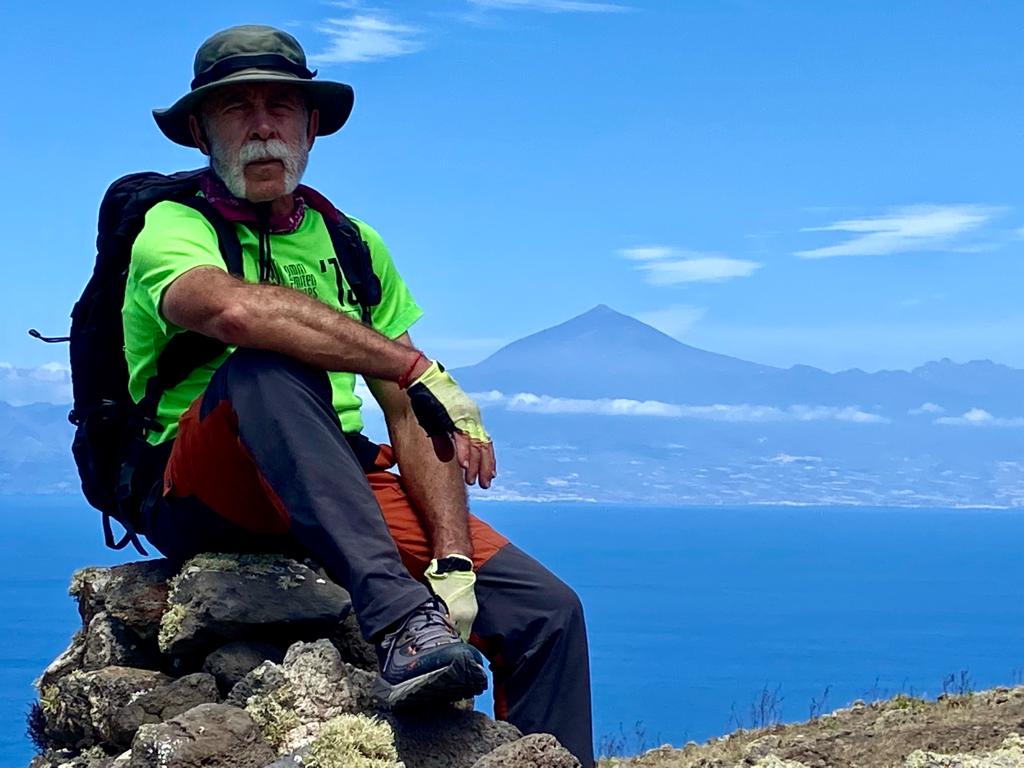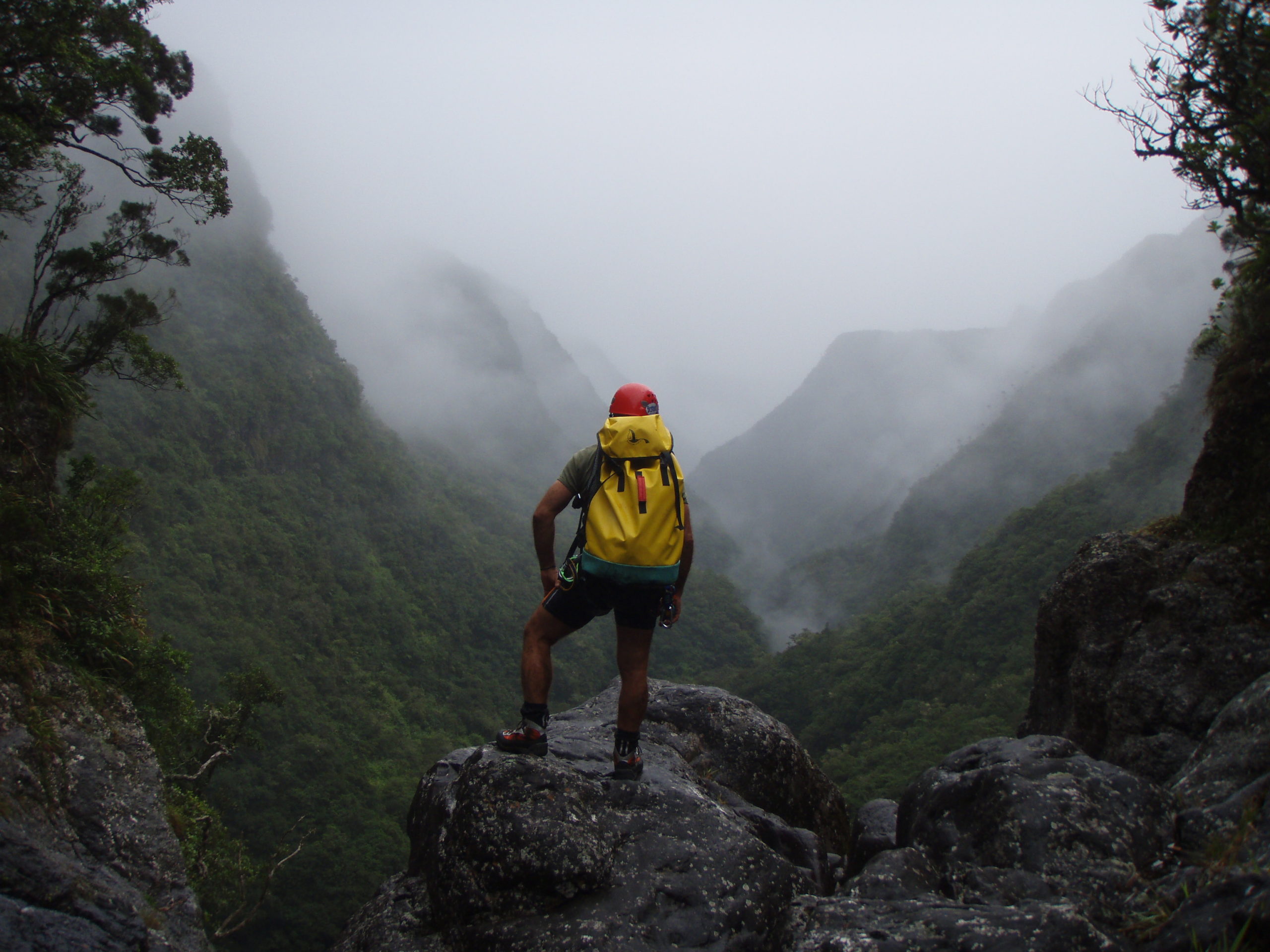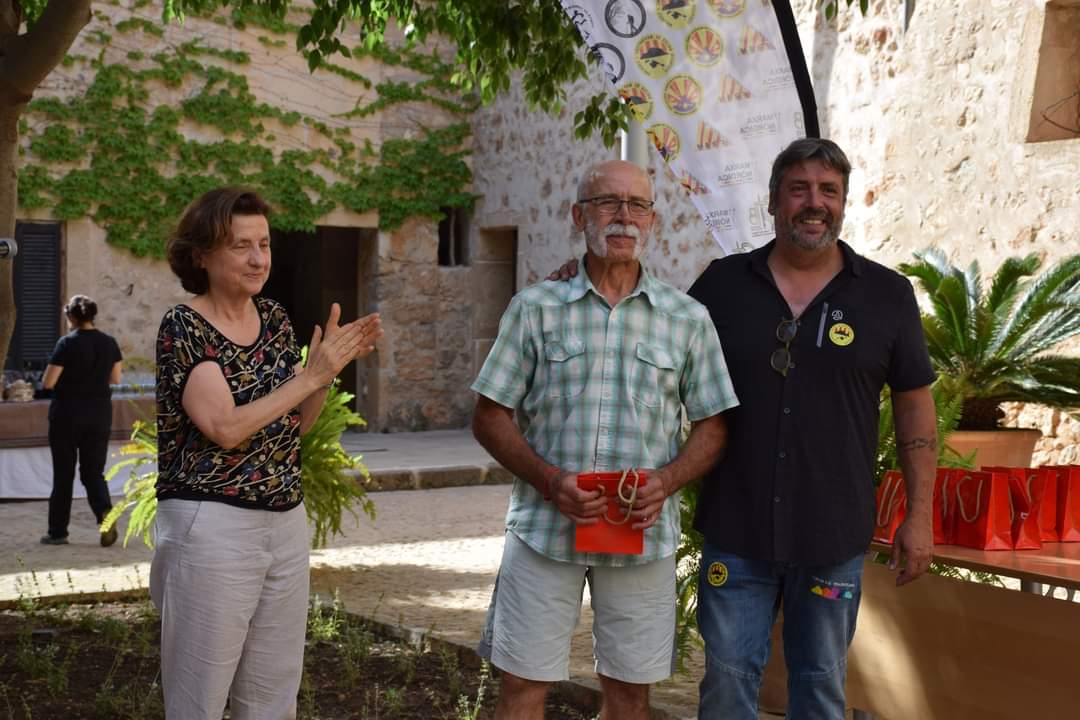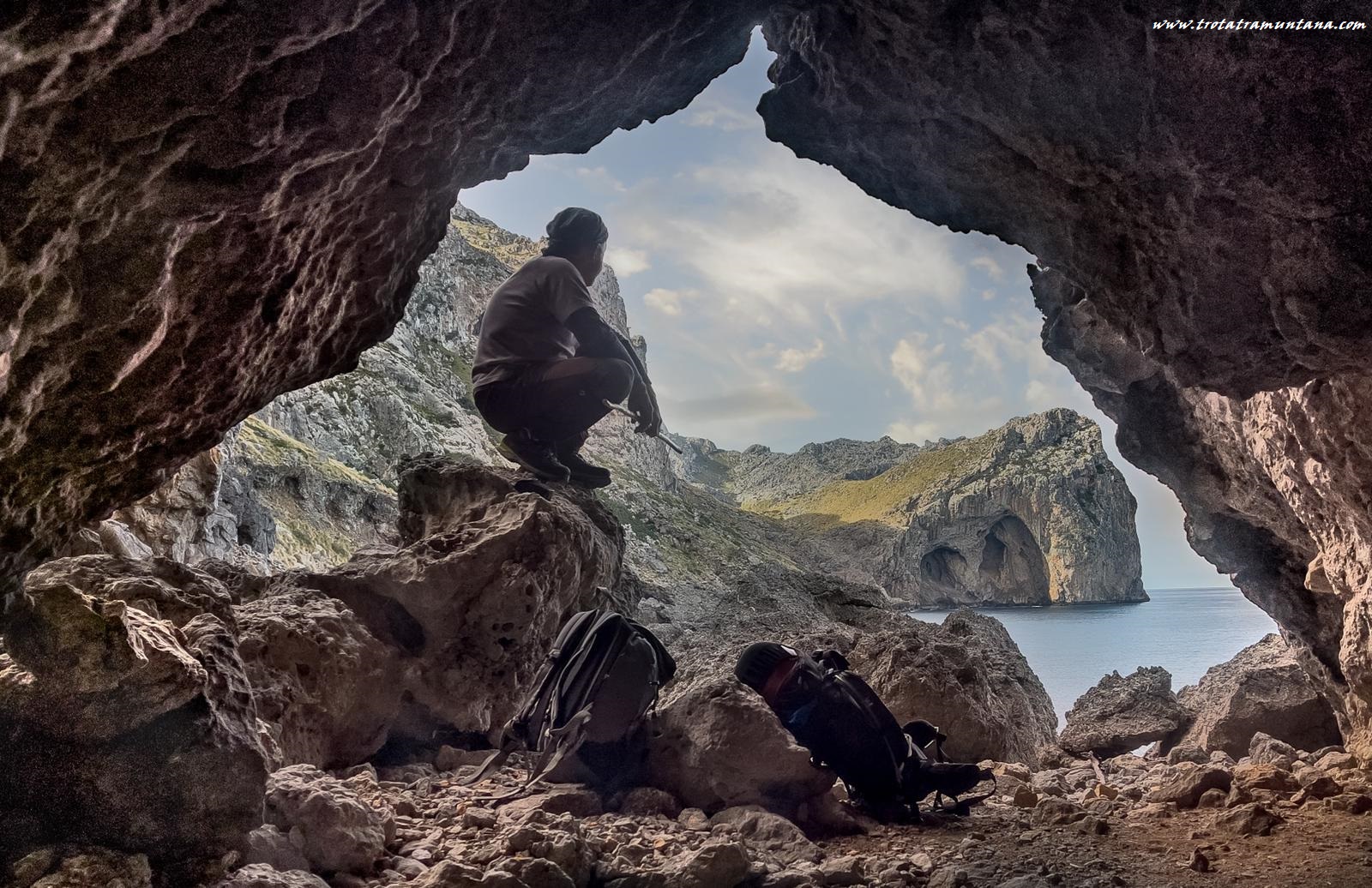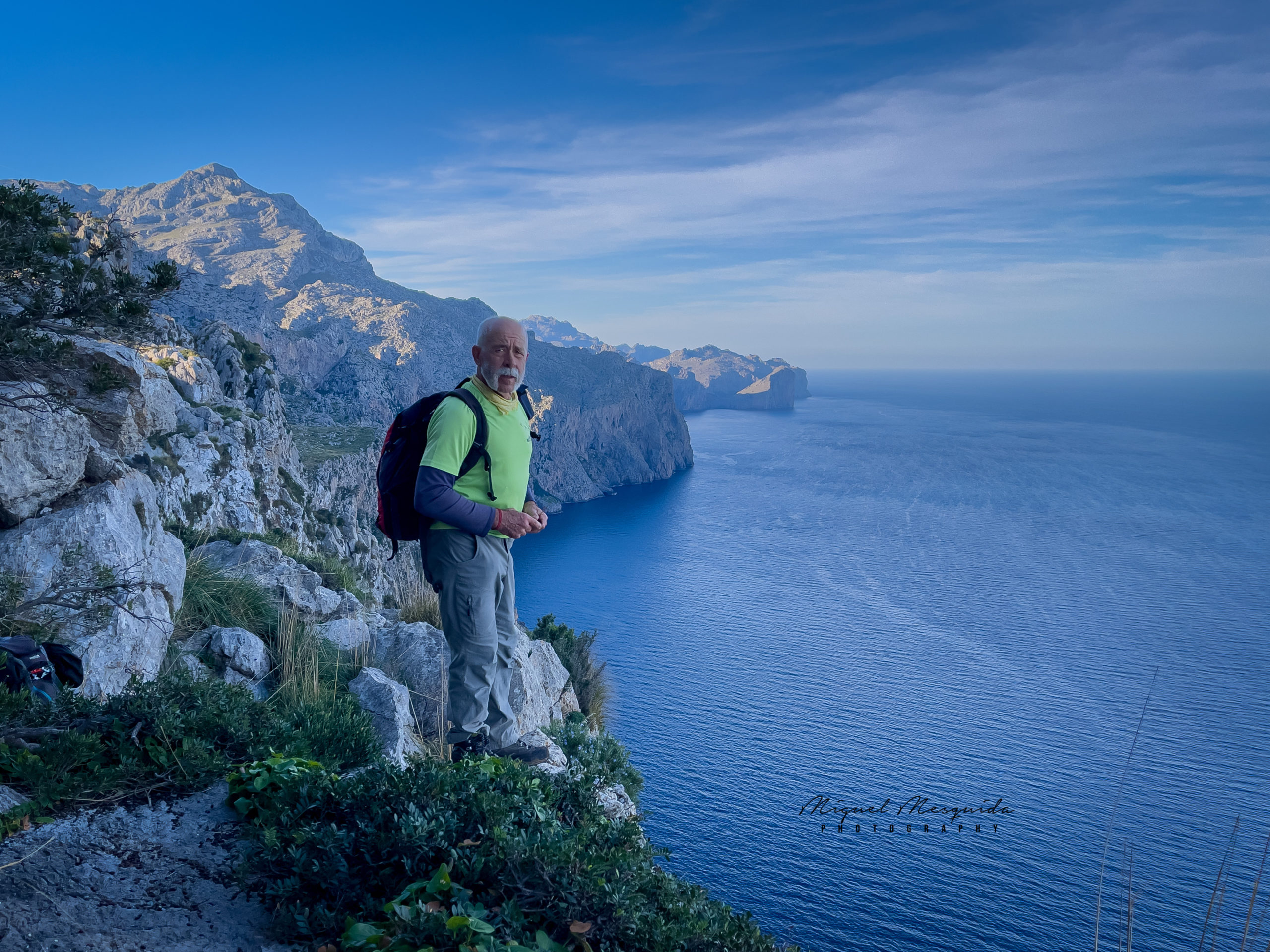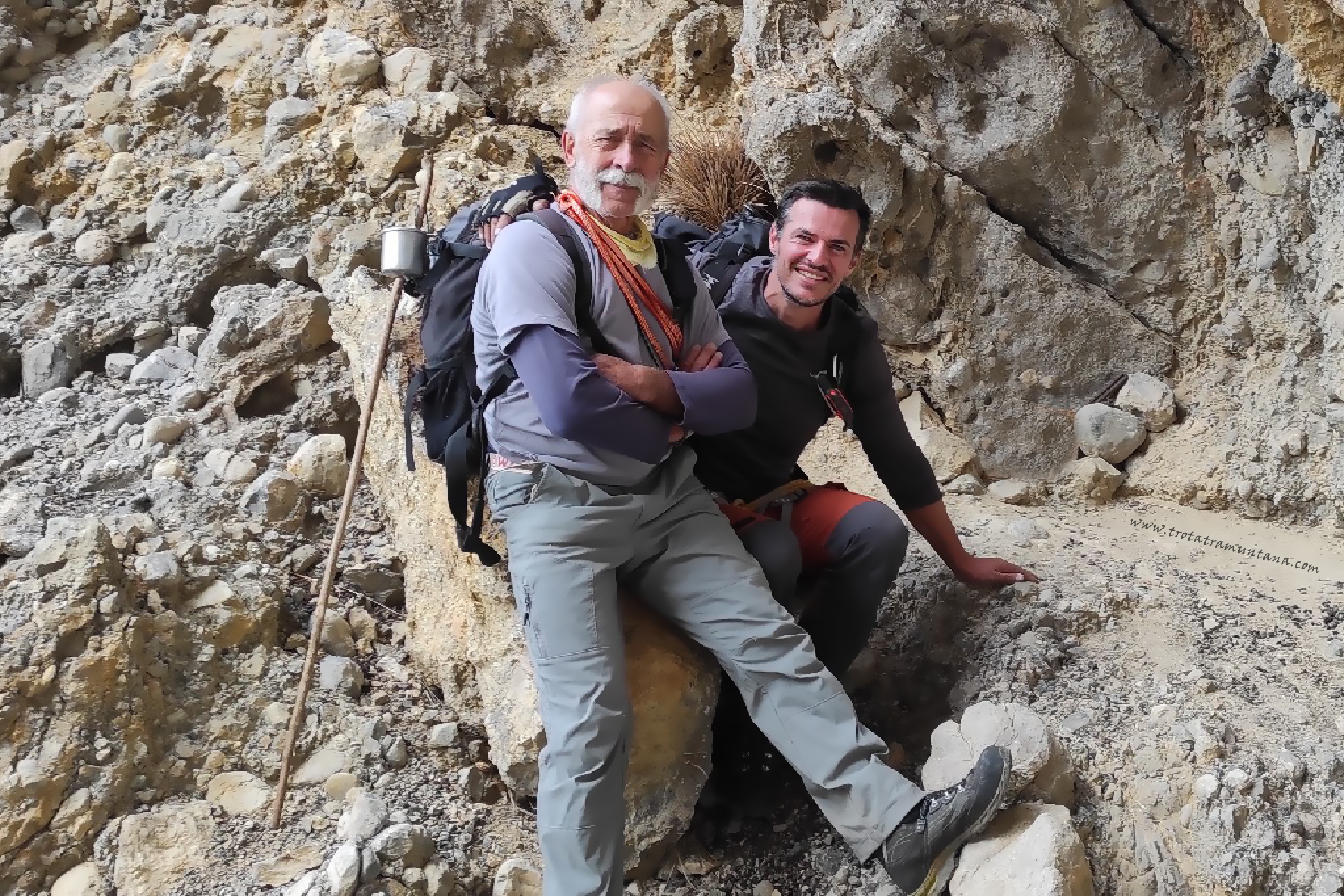Interview with Toni Pons (the Sinever)
A lifetime in the mountains of Majorca
By Miguel Mesquida from trotatramuntana 07/19/2022
…a philosophy of life, a religion, the mountain has given life to my life, it has given it a meaning, without it I would have missed everything
Toni is a Majorcan mountaineer who has dedicated his whole life to travelling through the wonders that the island hides. He is a seeker of lost corners in the time, of forgotten steps and impossible routes hidden from the rest. A giant among giants with an ability to face risk and seek the limit that has raised it to the category of legend of the Serra de Tramuntana. He is a Bestard shoe collaborator for more than 30 years and has lived many stories and times where things were different. He has done countless activities around the world. It is a true honour for me to perform this interview with the mountaineer I admire the most after having the great fortune of sharing the road with him.
First of all I want to comment that some of the places and photographs of the interview are currently in an exclusion zone according to the Natural Resources Management Plan (PORN): decree 19/2007 of March 16 and therefore you cannot access them without express authorization from the local Balearic Ministry of Environment and Territory, I leave you the link so that you can inform yourself and know about the procedures (in Spanish): More info here. Also note that when Toni travelled through those places, there were no restrictions, the stories and photographs of the exclusion zones are from before then.
When did your relationship with the mountain begin?
I think I was born with this hobby, when I was 14 I did my first excursion, which was from Inca to Lluc on foot, we slept on the football field and the next morning we went up to the Tomir and we returned, I perfectly remember going through the rossagueras (they are deposits of rocks and stones on the slopes of mountains) on 4 legs. But before that age, I was already out there with the boys from the town exploring and looking for stuff.
Doesn’t it come from family?
In those days my parents only thought about making a living, the mountain was only mean to work.
Was there a lot of love for mountaineering at that time?
In those days, hiking has just began. I was lucky that a friend worked in the boy scouts, and this man, through the centre Mariano Sineu set up a hiking group, the hiking group Mariano Sineu. From there, my hiking life began.
Later I became the guide of that group. After that, I became a member of the Excursionist Group of Mallorca (GEM) in which I have been for the last 50 years and I have had the honour of reaching the presidency for 4 years.
Why do they call you “Es Sinever”?
My family has always been from Sineu. In those days the mountaineers used to be city people (from Palma), therefore, the four weirdos that we supposedly weren’t from the city, were identified with our town’s or villages name. The hiking movement, in my eyes, it emerged as a way of escaping from the city since they had more time to leisure due to the type of industry.

What is your job?
I’ve been a local police officer for 35 years, always on the streets.
What did you like about your job?
You started the day and you never knew what you would find, I was lucky to be, for most part of my career, in the immediate intervention unit (UII) in which my knowledge of mountain, climbing and rope helped me a lot. We always had in the boot some climbing equipment and ropes that we used in many occasions. One of the things that I have taken with me is the gratitude of the people of Inca, I saved some lives and there are people who send me messages every day to say good morning and good night as a sign of gratitude.
Do you have children, brothers?
I have two children, a boy and a girl, neither of them follows my hobby although my son has made Sa Fosca several times with me. I have two brothers with whom I have a very good relationship and back in the day, they were also hikers although they didn’t continue. Once, with one of my brothers, before es pas des Sinever was open, I looked for an alternative to get out of the zone des torrent des Miracle without returning through sa Roca Llisa, it became a «V» climb through the right of said torrent but we managed to reach the top (this may help to understand why they did not continue with this hobby).

Pollensa coast. Image prior to the year 2007, currently exclusion zone
Tell me a little about your trajectory outside the island…
If I have to tell you everything I’ve done, we’ll never finish (laughs). I have been twice in Toubkal (Morocco), in Diran Peak (Pakistan) where I lost two colleagues, in Patagonia (Argentina/Chile), in Atakama (Chile), Ireland, Madagascar, Japan, Norway, France, Reunion Island where I made the most difficult canyon in the world (Trou de Fer), Cape Verde, here in Spain there are innumerable peaks that I have climbed in the Pyrenees (Aneto, Perdido, Posets…) I have been lucky to be able to do many things, mountains, canyons, and by bicycle.
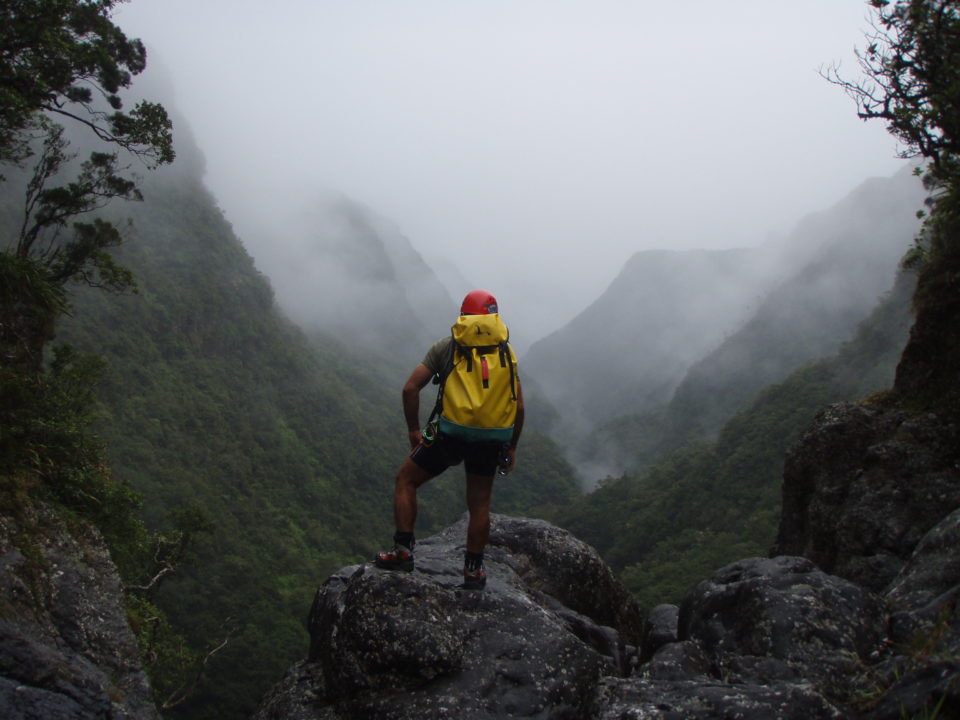
Trou de Fer, Reunion Island
Have you received any recognition?
I have two plaques in recognition of police merit (2007 and 2016), and two distinctions in recognition for my sports career, the Barcella d’honor from the Sineu City Council (2021), and the Balearic Mountain Federation (2022).
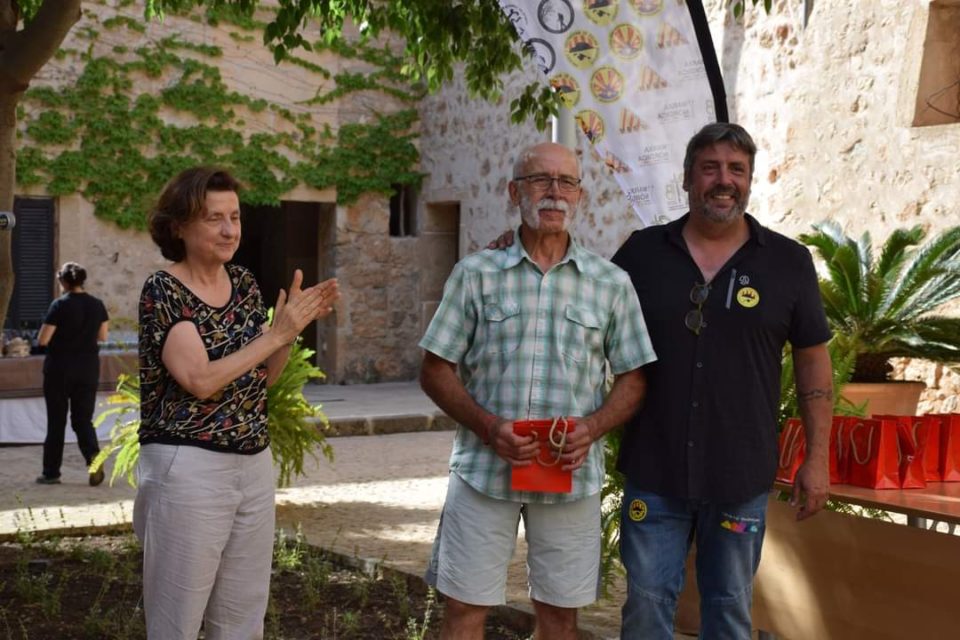
Award during the 50th anniversary of the Balearic Mountain Federation
Were you one of the pioneers in crossing the section of Sa Fosca in the torrent des Gorg Blau, right?
After the group that did it for the first time in 1965, it went many years without anyone doing it. The first time I did it I must have been 20 years old, so it was around the year 1972, we were three companions who started at 9:00 in the morning and we finished at 12:00 the next day. We wore swimsuits,T-shirts, a bag of cordino, a carabiner since the “8” did not exist, and lorry tire inner tubes as a raft. In those days I always descended in summer, since in winter we needed material that we did not have.

In the mythical pas de s’acollonament, entry point to sa Fosca
What technique did you use to progress?
We descended with the Dulfer system, that is, passing the rope through a carabiner and using your back to absail, then you spent several weeks with a burnt shoulder. Since neoprene did not exist either, you tried to reach the water by placing the rubber tubes under your bottom, to see if with a bit of luck you were right, which it didn’t always happened and you ended up soaked (laughter). Later they invented canvas rafts for caving. In my beginnings I manufactured the tools myself in ablacksmith’s workshop, like my first «8», the ice axes, or the pickaxes. Mountaineering shops did not exist and we had to fend for ourselves, we used the clothes we had from our home or used military clothing.
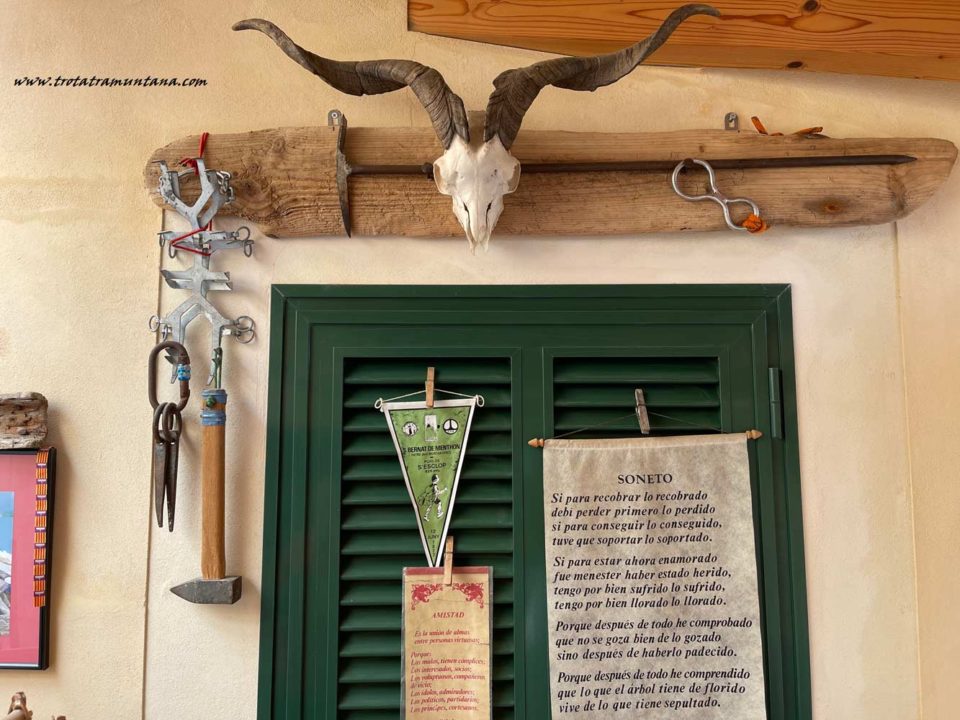
Homemade tools at Toni’s house
Was there an obsession to conquer Sa Fosca?
I think that it was only the priority objective for certain people who knew something about that place, in those times there were many other objectives such as the Espolón Aries, s’Agulla des Frare, es torrent Fondo… it was all new and we were starting, it was one more challenge.
What did it mean logistically to go to the mountain before?
Before, everything was much more complicated, I had to take the train from Sineu to Inca, wait 1 or 2 hours for the bus to Lluc and from there walk to wherever the excursion was, the frequencies were not what they are now. The way back was exactly the same route. It was a bit of a hassle since in order to go, you had to leave on Saturday afternoon and return on Sunday night. Our meeting point was usually the Lluc square, then you got together with one or the other. Imagine what it was like then going to the Torre de Lluc or Torrent de Mortitx without a car.

In Switzerland
Was it more risky then to go to those places?
Risky I don’t know, but really exhausting (smiles), and if something happened to you, you could make smoke signals since there were no rescue teams and it was a bit “save yourself however you can”. The companions themselves were responsible for trying to do something, I participated in several rescues, some in sa Fosca.
What is your favorite part of the island?
From Puig Roig to Pollença. I find it the wildest, most hostile, and authentic, the mountain in its purest state. Not influenced by tourism like the area of sa Calobra towards Sóller. And even more so if you think that 50 years ago there was no maritime traffic like today, on that north coast there was no one. I will tell an anecdote related to that coast, the first time I went down to Cala Codolar was with a group of friends from Sineu after sleeping in Cosconar, behind us there was some peasants from Cosconar who went there to fish at the cove, we were already taking a bath when they arrived and one of them told us “ Get out of here, I’ve seen a goat fall and I’ve only seen a pool of blood“, that is because in those days the sharks came much closer to the coast.
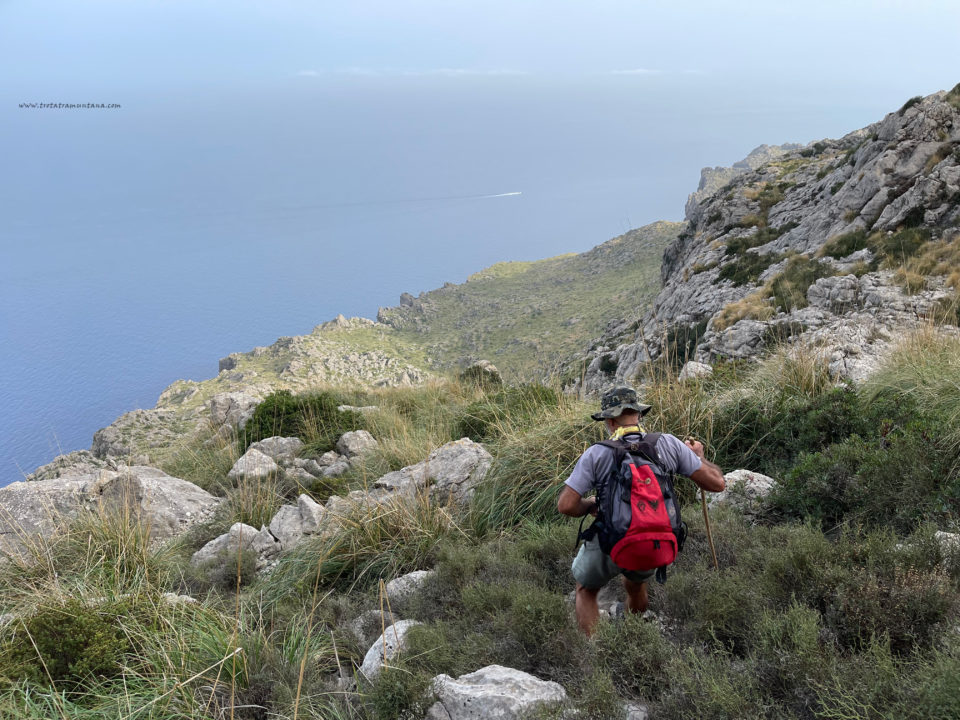
Toni’s favorite territory.
You are known for opening or rediscovering very risky routes, which ones would you highlight?
The pas xungo* in the torrent de s’Argelagar* , the route to sa cova de sa Butxaca* , and of course the pas des Sinever* . It is true that I have dedicated myself mainly to this type of routes, especially the descent by the sea cliffs.
*Exclusion zone
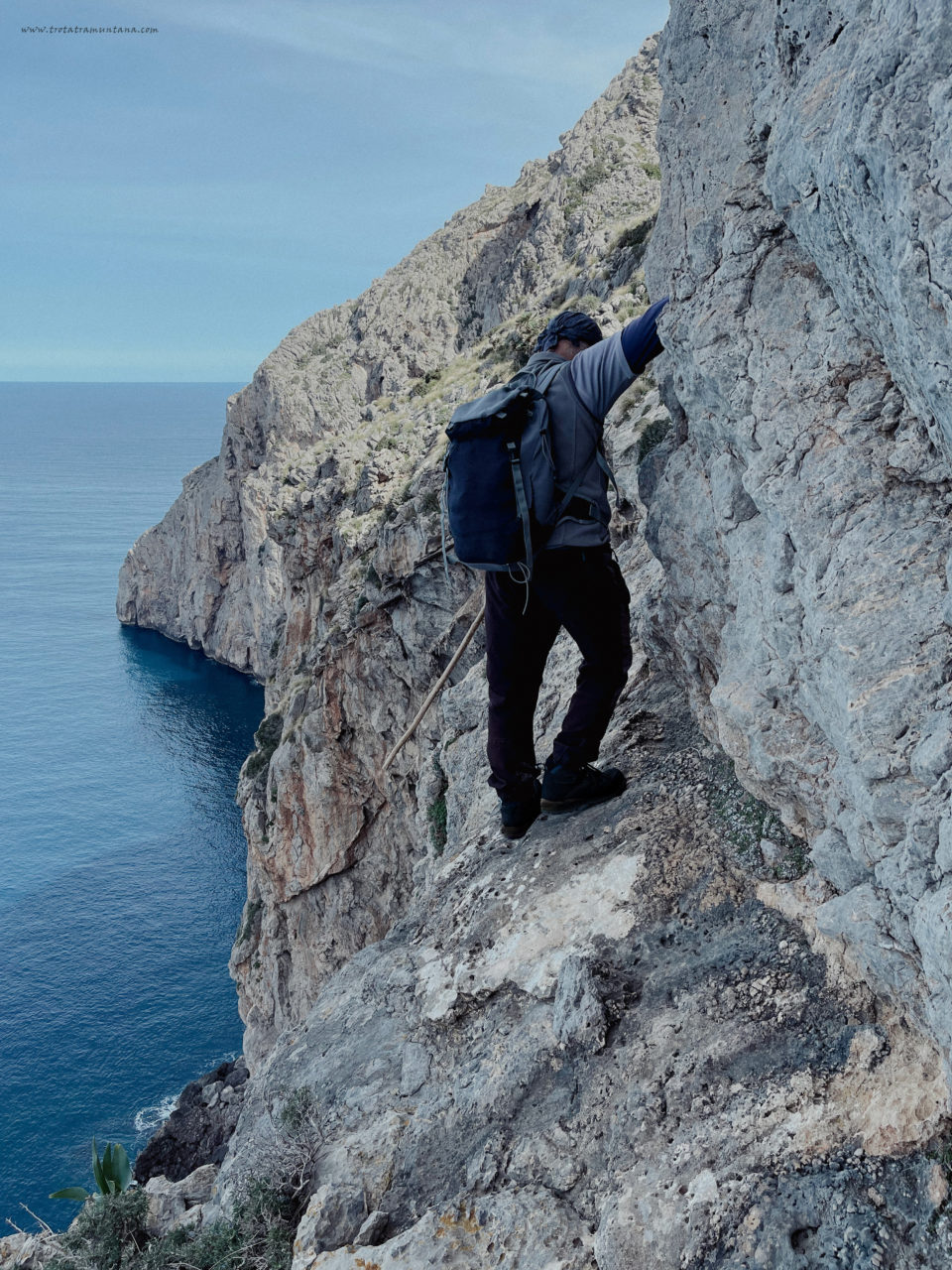
The Cornice at 200 meters high where es Pas des Sinever is located. Image prior to 2007, currently an exclusion zone.
What moves you to carry out these types of activities?
It is something that comes from within, I will quote the phrase “because it’s there”, some will go to the discoteque because they are “there” and others will go to the mountain “because they are there”. It is a matter of feelings, it is something that stretches you, attracts you, what attracts me is the unknown.
One of the things you’re known for is that you risk a lot, aren’t you afraid?
I think that it must be a faculty that I have, it is true that where others have fear, it is much more difficult for me to perceive it in a dangerous situation, in fact the more dangerous the situation, the more I like it. It is true that I do not usually use ropes or mechanical elements, I try to do everything bareback, always within certain limits, of course, but normally where another would pass with a rope, I don’t. Everyone has faculties, this is mine. The fear before danger has never been part of me, although I’m careful, you know?, but I do not perceive the risk as others see it. Once performing a manoeuvre that went wrong in the torrent de l’Ofre I was sure that I was going to fall but my children flashed before my eyes, it is something I will never forget.
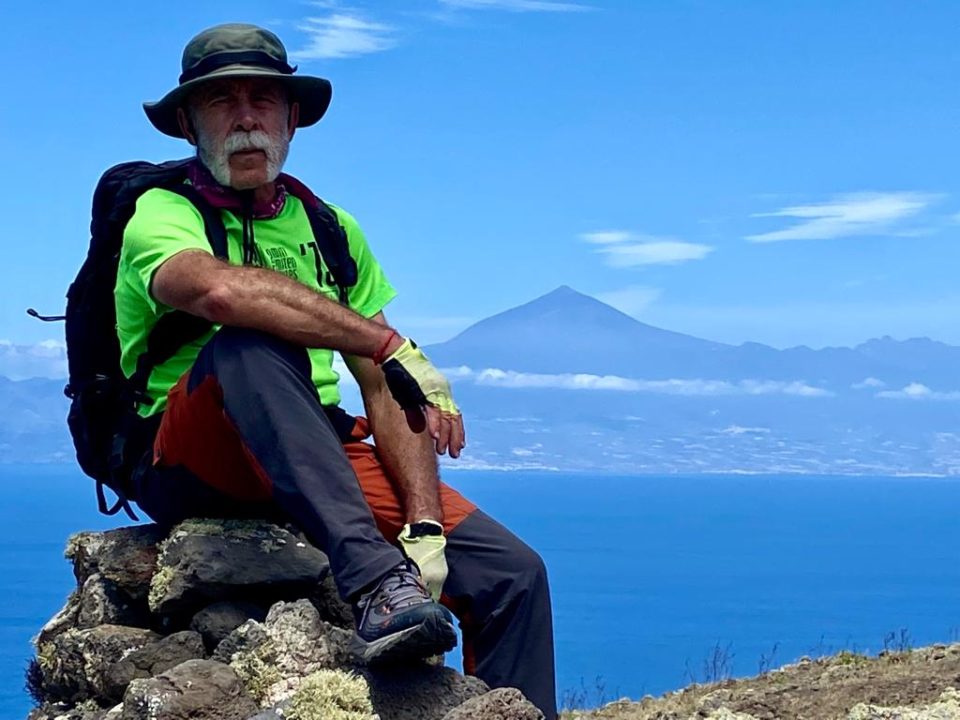
Toni Pons
When did your relationship with Bestard begin?
It started in the year 93 with the Diran Peak expedition where Bestard helped us providing the boots and since then I have been working with them as a boot tester. I am extremely grateful to them for having me all this time during which I have been able to test mountain and canyon boots. All of them fantastic.
How has footwear evolved in these almost 30 years?
It has evolved from better to better.
I heard a rumour that in Bestard they know you as an “all terrain” person. Is this true?
Well (laughs) this is because I adapt to everything and everything works for me, I am from a generation where we had to be content with what little there was. Before, for boots to adapt to your foot, you had to wear them in for a year and they weighed three kilos each, they gave you a good beating on the feet.
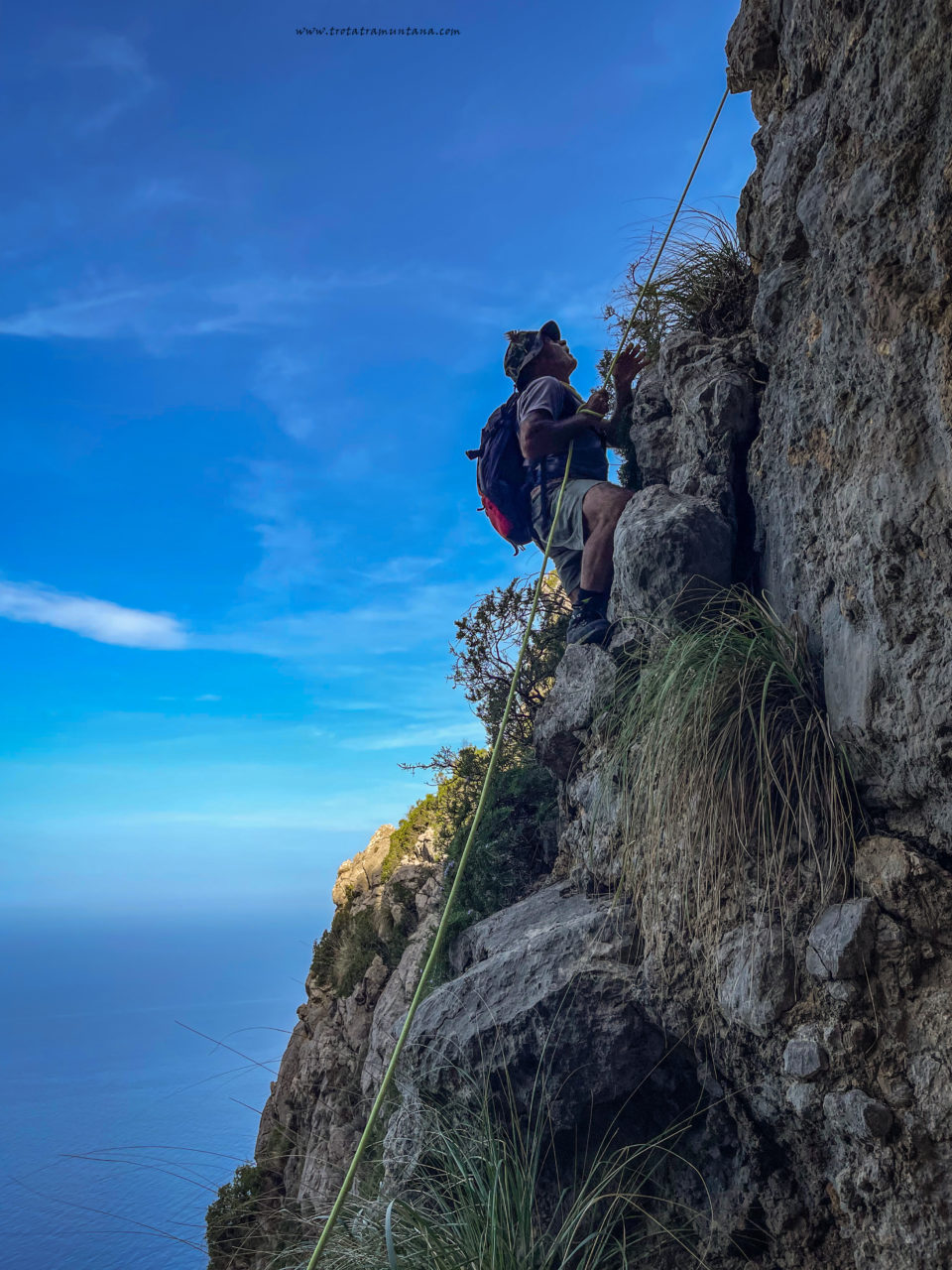
on a dangerous stretch
What is the secret to reach 70 years in your state?
There is a phrase that has always stuck with me and it is “the path you travel is the same one you choose”, I have chosen to be a police officer in my life and I think that requires a series of physical conditions, just like going to sa Fosca requires being in good shape, I keep descending it the same way as when I was 20 years old, there is no difference. It is a cause-effect of the maintenance I do, of my philosophy of life, of my diet. We must not let rust get ahead of us, I ide a bike every day, maintenance every day, an active cultural and sporty lifestyle. I haven’t spent a single day in my life that I haven’t done an hour of daily sport; I don’t remember a day where I spent it on the sofa.
What challenges does a person who has done as much as you have in mind?
I still have a lot of challenges to tackle. I’ve been lucky to be able to do a lot of things, but today there is nothing that stops me and I feel like I have everything to do, I really want to. You always have to do things and stay active; you never have to leave the body to decay.

exposed coastal crossing
How do you see the new generations in the mountains?
I think that when people grow up in a comfortable environment they get too comfortable. Nowadays you are going to do Sa Fosca or any torrent and it is all equipped, we didn’t knew about it and we had to put a wedge, a stick, a rock. Currently is not so much “adventure”, it is more like a sport, then it was a philosophy of life, a religion, the mountain has given life to my life, it has given it a meaning, without it I would have missed everything.
What do you feel in the mountains?
Freedom, freedom is the most beautiful thing in existence. Today there are certain groups that try to limit this concept of freedom.
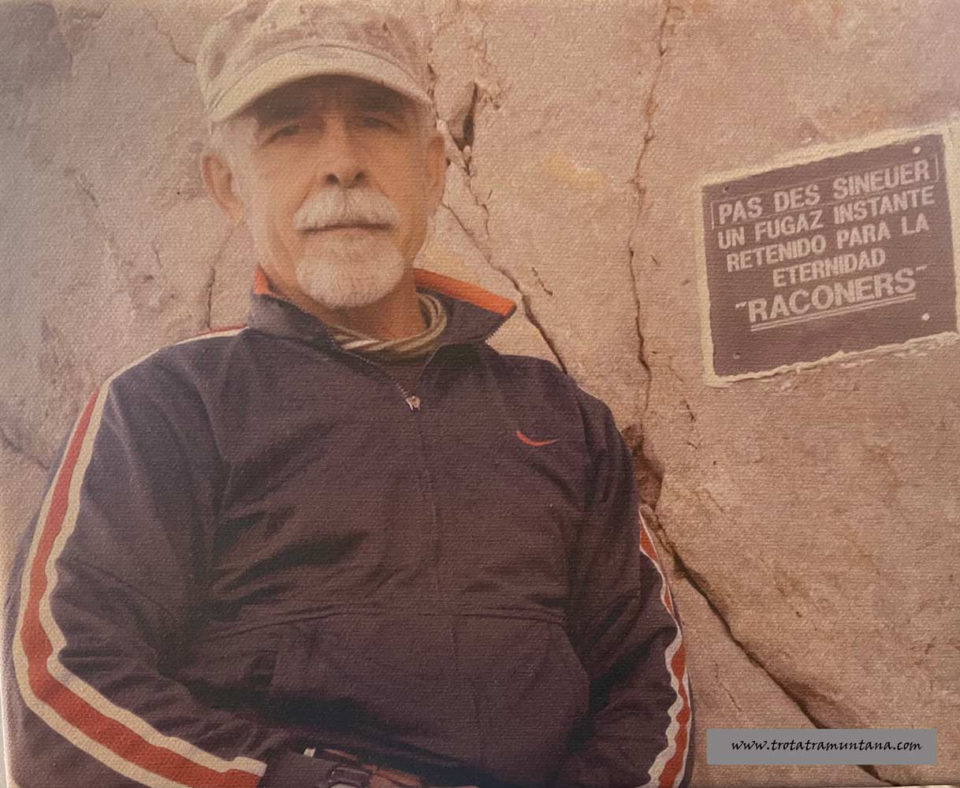
Commemorative plaque for the discovery of the Pas des Sinever. Today withdrawn by the Ministry of the Environment. Image prior to 2007, currently exclusion zone.
You, who has lived the mountain as you say in freedom, how do you see so much limitation today?
On the one hand I understand it but on the other I find it hard to accept it, I have lived the mountain in the most complete freedom, but also in the most complete education, before you passed through a private land and if the farmer came out you asked permission to pass by, nowadays it seems that the mountains being private property belongs to everyone and it’s not like that either. The problem today is overcrowding, a society of consumerism that generates a society of leisure. Before we were going to do Sa Fosca, we were only two rats, now we are 200 rats. I understand that we have to put a brake because the environmental impact that we cause is bothersome.
This influences that before, as I have said, it was a philosophy and now it is more of a hobby, a fashion trend. Currently you do the torrent de Pareis and when you get to sa Calobra you have a paella and a bus, before we had to study how to get back upwards. Before we used to wear leather shorts and now first you have to stop by the boutique and kit yourself out before you even start.
What is the solution to this?
The solution is not simple, it goes through regulating but not prohibiting. I cannot understand that the northern exclusion zones should be permanently closed when only 20 people a year go to those zones. As I said, education is a key factor but so is sensitivity. If you find a flower, with a little snail, you don’t step on it, do you understand me?
Speaking of trends, do you understand mountain competitions?
I think it’s a commercial trend like others and I’m not interested in it. The mountain is a site of contemplation, of philosophy, of freedom, not to compete. I respect it but I don’t share it.
Tell me the most inexplicable thing that happened to you on the mountain.
About 40 years ago I was once alone by the Font Gallarda and when the sun had just set a reddish disc rose from the sea from the northwest, it was huge, the size of another sun.
To end the interview, Toni would like to take the opportunity to «thank you from this medium to all those who have collaborated with my asventurers, and to all those who, during so many years, we have walked together«.
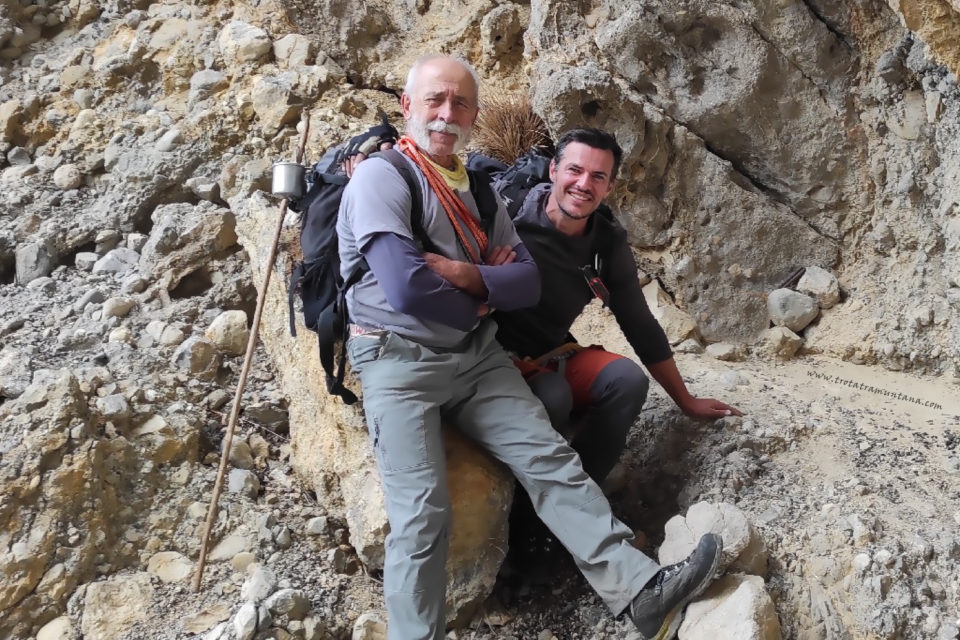
Tony and the author. An honour for me to be part of his history
